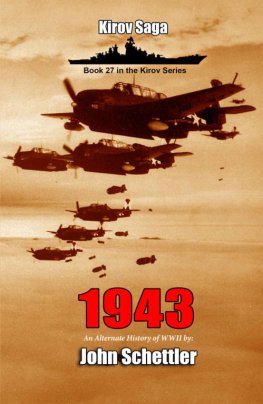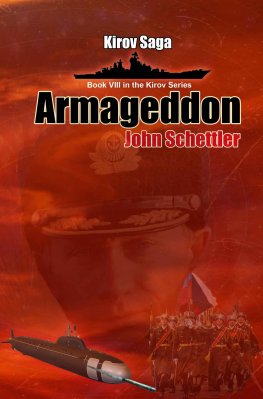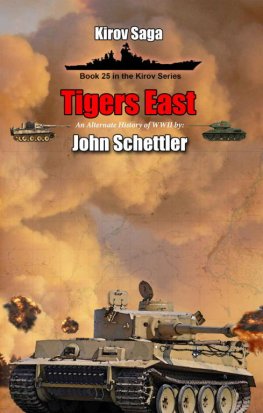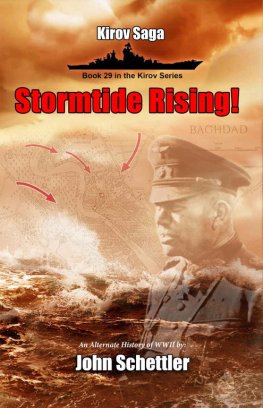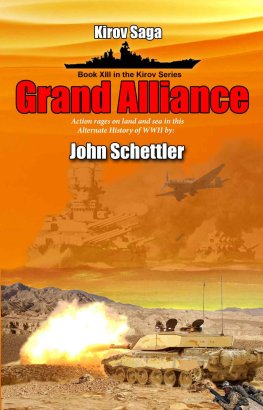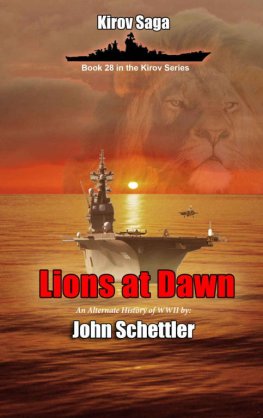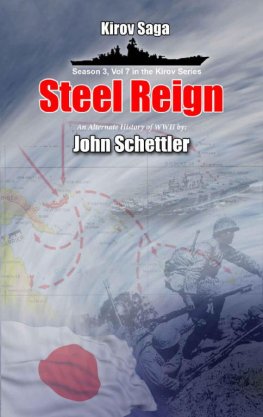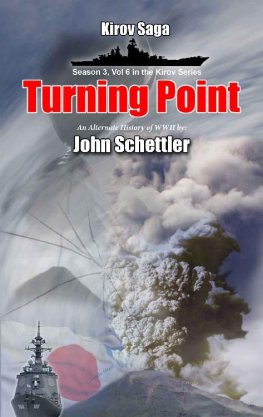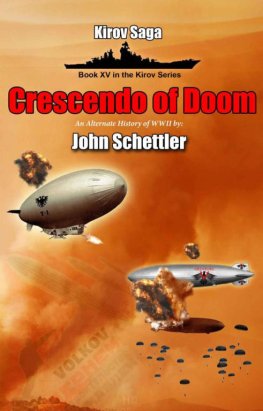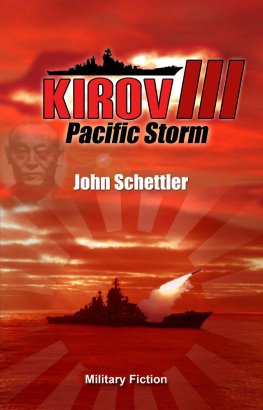Kirov Saga:
1943
By
John Schettler
Dear Readers,
Here we go into 1943, and with a book that will be exclusively devoted to action on the Pacific Front. If any of you happened to pick up the Roll of Thunder/Sea of Fire battle book duo, then with this book you will have the entire Pacific theater subplot in hand from Pearl Harbor to this action in January 1943.
Well begin here with the strategy the US devises to begin offensive operations, as they have been pushed as far as they can afford to go, and can yield no further territory to Japan. Now it is time to fight back, and so in this volume we will be returning to the major ground battles fought on Viti Levu in the Fiji Group, and the subsequent naval engagements fought to support that battle.
But the Americans have built up a great deal of strength through 1942, both with land forces and in the Navy. In this altered meridian, the arrival of each Essex Class carrier is accelerated by about 3 months, but as you will see, the Japanese also have a few tricks up their sleeve. Ill also lay the groundwork here for a lot of new planes on both sides that will soon be entering the war.
The year ahead is going to be very busy, as we now have both Patton and Monty gearing up for a big push on Tunisia. That will be next, and then it will be followed by the Spring thaw in Russia, and the Germans once again transitioning to offensive operations on the East Front. While the Soviets staved off defeat with Zhukovs stunning winter offensive of 1942-1943, the battles to be fought in 1943 will decide the fate of Sergei Kirovs Soviet Union, and by extension, they could very well decide the outcome of the entire war.
Im looking forward to writing it all for you, and as always, the major characters you have all come to know and love will play prominent roles in all this action. One last note Somebody finally got the Kirov series in to Wikipedia! Halleluiah! You can check out the link here: https://en.wikipedia.org/wiki/Kirov_(novel_series), and I am very grateful to whoever it was out there who took the time to do this.
Thank you!
- John SchettlerI wish to have no connection with any ship that does not sail fast, for I intend to go in harms way.
John Paul Jones: 16 NOV 1778
The plan that had brought the Admirals together had been a long time coming, first hammered out in the shipyards as the workers hastened to get new carriers to sea; then hammered out between the senior officers on every side, eventually refereed by Roosevelt himself.
It was a plan as much born of necessity as it was from any sense of strategy. The enemy had pushed as far as the Allies could permit, and there was no more ground they could afford to give. That was as true now in the Pacific as it had been for the Russians that winter. It was time to dig in, to hold on, and then to start pushing back.
At the Washington conference in early December of 1942, the Allies had met to discuss strategy in the Pacific, and assign responsibilities for the defense of that area. At that time, the 180th meridian, which was the dividing line between the east and west hemisphere, was selected as the demarcation point. The US would defend everything to the east of that line, and the Commonwealth everything to the west. That soon became impractical, when it was seen that the real thrust of the Japanese offensive fell to the west of that line, and that the Commonwealth was wholly incapable of stopping it. Now Admirals King and Nimitz had to decide how to intervene, and more, how to prosecute this war against Japan.
It was Napoleon who once remarked that: The passage from the defensive to the offensive is one of the most delicate operations of war. Now King and Nimitz had to undertake that operation. They had done everything possible to defend the few islands that still remained, and with the overall goal of keeping the vital lines of communications open to Australia. There sat MacArthur, simmering and steaming, writing off directives and demands for the eyes of Roosevelt himself. To take that passage from defense to offense, there were two clear routes open that became the subject of heated discussion.
MacArthur wanted to use Australia as his springboard to attack Papua New Guinea, then seize the Bismarcks, advance up the eastern coast of New Guinea to then attack the Philippines, followed by Formosa. This would not only eliminate the strong Japanese presence in these areas, but also cut off all the Japanese possessions in the Dutch East Indies, and establish a link to China, where it was thought that the US could then assist the Chinese War effort against the bulk of the Japanese Army on the ground. Yet to Nimitz and King, that road looked like a long and difficult slog against the bulk of the Japanese forces committed to the South Pacific.
Halsey had just enough force in hand to stop the Japanese, said Nimitz, but it cost us Lexington, Yorktown, Saratoga, and Wasp. Thankfully, we hurt the enemy too, and they lost four of their big carriers as well. So you might call it a draw, but it was a near run thing. We were barely able to get enough forces to Fiji in time to stop them from taking Suva. Now, however, the buildup there has led to parity, and with the arrival of 2nd Marine Division in theater, well have an edge for the first time on the ground.
To get that edge, the Army had contributed the 23rd Pacifica Division, which had once been called the Americal Division in the old History. It was holding the south coast of the island, along the important Queens Road that connected Suva to the west coast ports of Nandi and Lautouka. The Army 37th Division, the first to arrive in early 1942, was now holding the large secondary island of Vanua Levu, where the US was actively building numerous airfields to insure air superiority over the islands, even if no US carriers could be on hand. That was an expedient forced upon them by the fact that the carriers lost in the early actions had so diminished US naval power, that the fleet had to be withdrawn to Pago Pago in the Samoa group, and Tahiti.
Now we have three divisions tied down in the Fiji Group, said King. They put in two on the main island, the 38th and 48th, all troops they used to take the Philippines. After what they did to MacArthur in the Philippines, Ill be honest and say I had my doubts we could hold Fiji at all.
Our Marines are tough hombres, said Nimitz. That was what made the difference. And this time we have enough fighters at Suva to contest and hold the airspace over that island, but that may not last forever.
Alright, said King, So we laid on the ropes for the last half of 42. Now its time to start punching again. But we may have to land one on MacArthurs chin before we get things moving. First off, he wants command over the whole shebang, including our two Marine divisions. Well, to hell with that. Ive insisted that you be named overall commander of all naval forces, and that includes the Marines. The Army can follow up and occupy positions we take, and MacArthur can run that operation.
MacArthur wont like that one bit, said Nimitz. Hell say were trying to steal the whole show out here and relegate the Army, and his own illustrious self, to a secondary role. Hes been insisting on his drive to Rabaul, which is complete lunacy at this stage. We cant contemplate such moves until we have Fiji and Noumea. Can you imagine trying to lift three divisions out of Australia through the Coral Sea with Japanese air power right there in New Caledonia? Its madness.
MacArthur was quick to clarify his position last week, said King. He says he never had any intention of striking at Rabaul before we had obtained favorable positions in the Solomons and on the east coast of Papua New Guinea, but that isnt going to happen any time soon.

